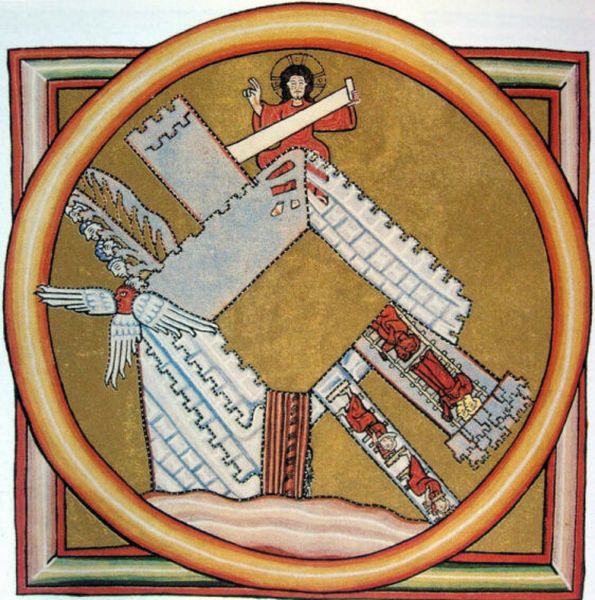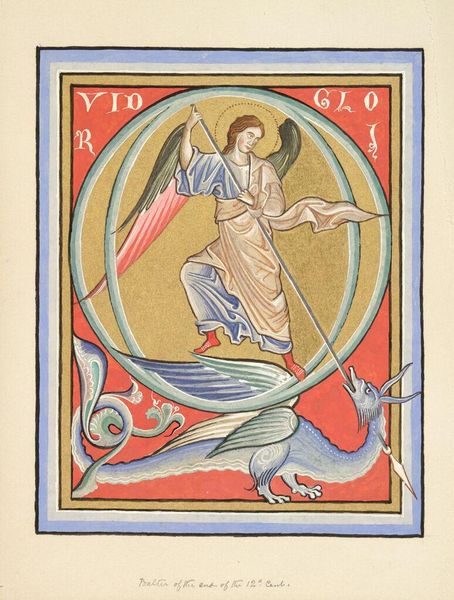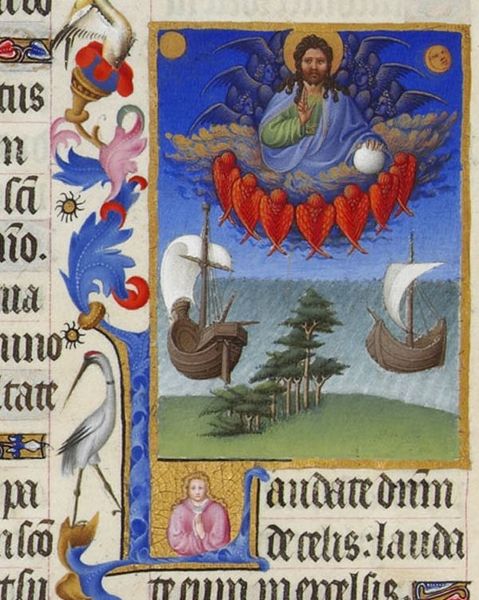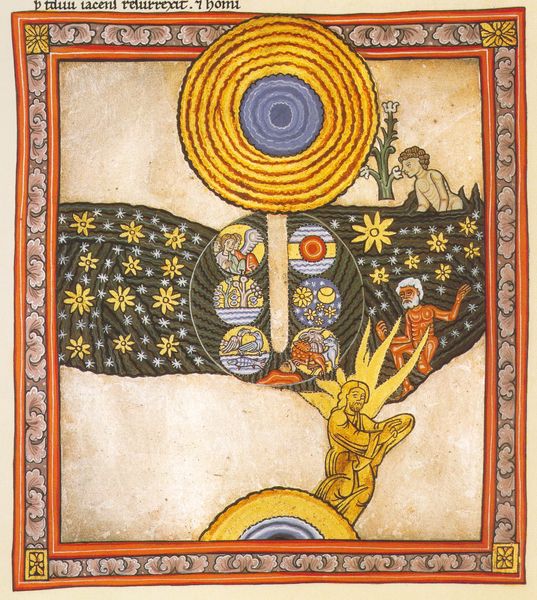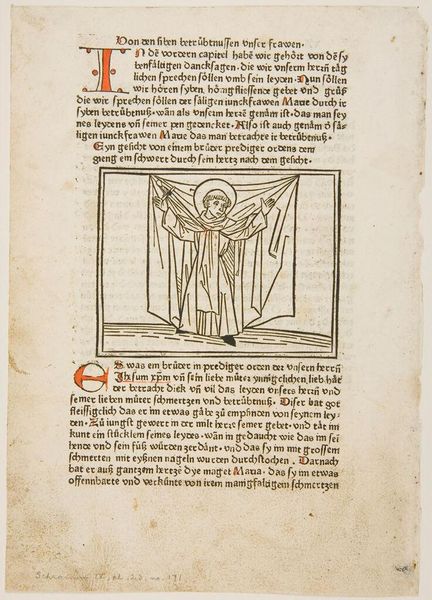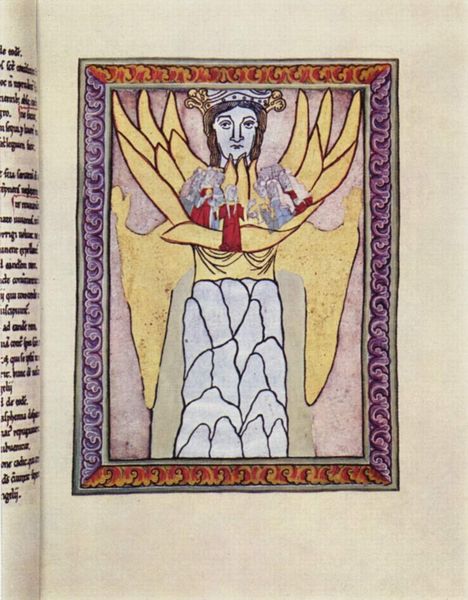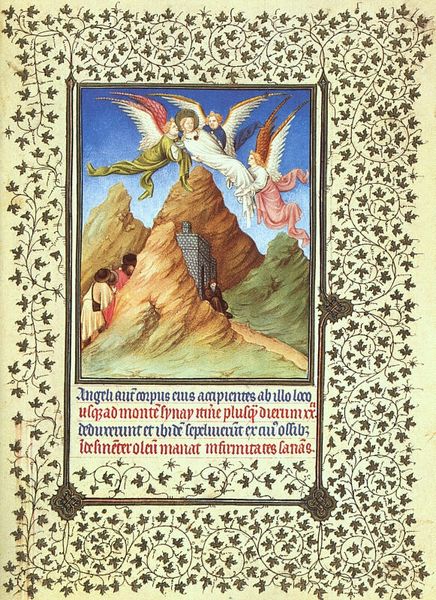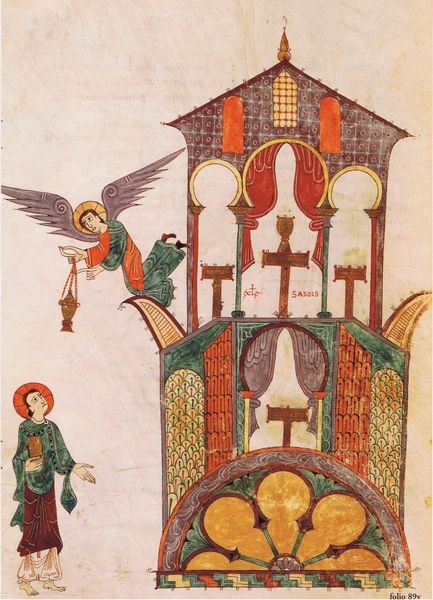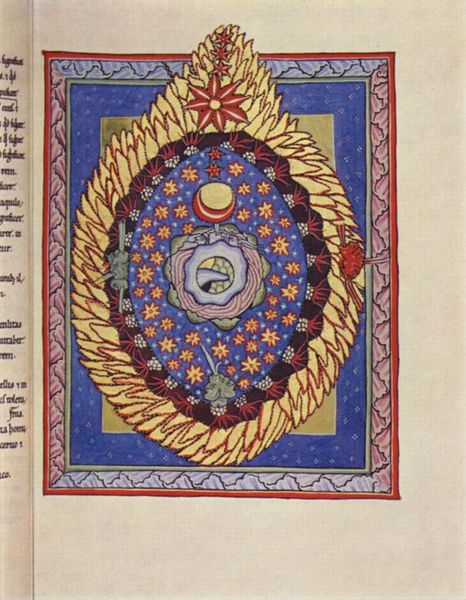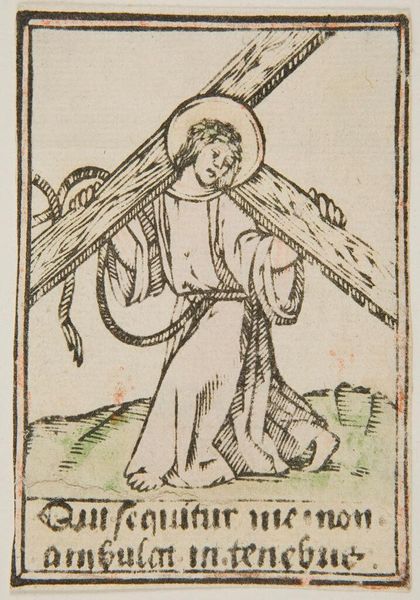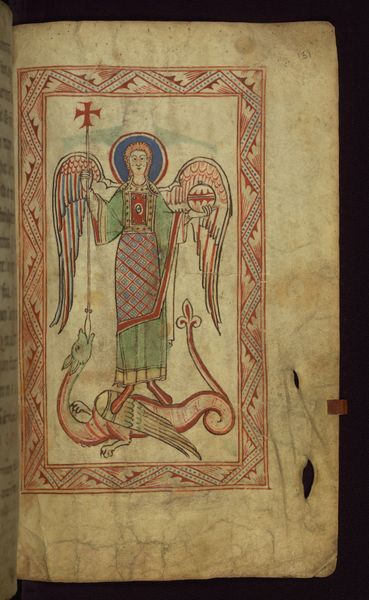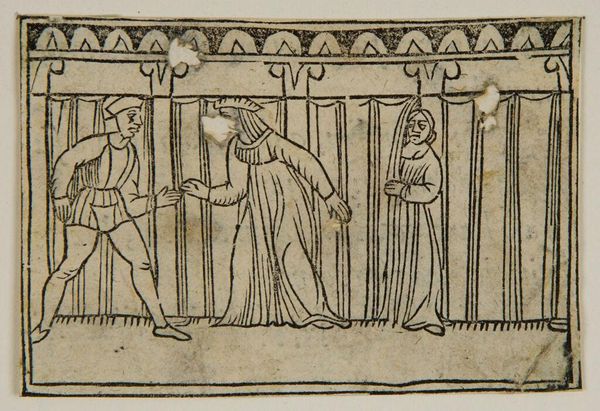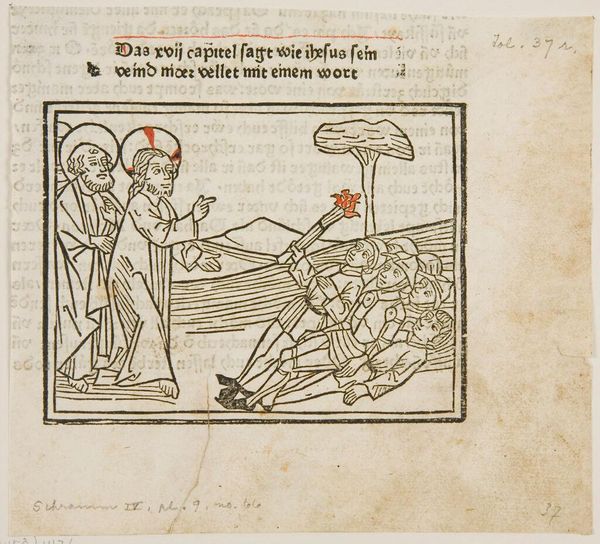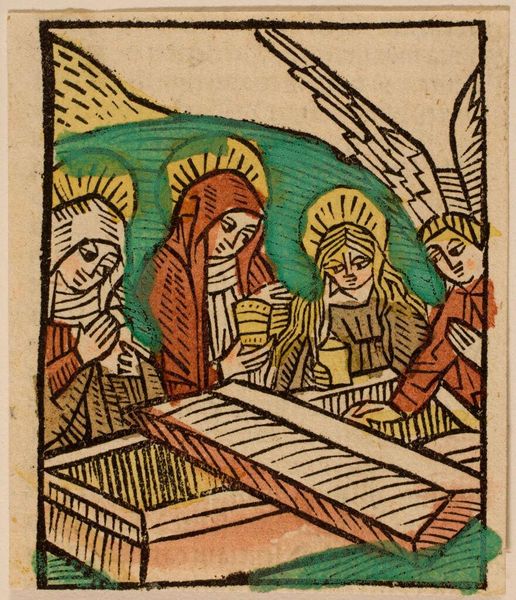
drawing, paper, ink
#
drawing
#
medieval
#
water colours
#
figuration
#
paper
#
mural art
#
ink
#
coloured pencil
#
miniature
Copyright: Public domain
Editor: Here we have “The Zeal or Jealousy of God” by Hildegard of Bingen. It seems to be made with ink and watercolors on paper. I am struck by how the figure combines organic and inorganic forms – a human head attached to what looks like a fortified structure. How would you approach understanding this work? Curator: Well, let's think about the materials first. The use of vellum, ink, and pigments wasn’t just about aesthetics; it was a statement. These weren't cheap, mass-produced materials. Consider the labour invested. Preparing the vellum, grinding pigments by hand – each step involved skilled craftspeople. What does that tell us about the value placed on illuminated manuscripts at the time? Editor: That these were precious objects, accessible only to the elite? Curator: Precisely. But also consider Bingen’s specific context. As a Benedictine Abbess, her work served a didactic purpose, translating complex theology into accessible visuals for her community. So, how does the imagery function as a material articulation of religious power and social control? Look closely at the ‘fortified structure’ you mentioned. It seems more than decorative, right? Editor: It does. It looks intentionally architectural, almost oppressive in its geometric rigidity compared to the organic head. Curator: Exactly! And notice how that structure literally emanates from the figure. It suggests a divinely sanctioned power, manifested in material form – a reminder of both God's presence and the institutional authority that represents Him. We could further consider who produced and distributed this manuscript, tracing lines of production, ownership, and viewership. Editor: So, by analyzing the physical aspects of the piece and the conditions of its production, we reveal the social structures it supported? Curator: Exactly. We can see how religious doctrine was materially encoded and consumed. Editor: That’s really insightful, seeing it not just as an illustration but a material artifact embedded in a social network. Thanks!
Comments
No comments
Be the first to comment and join the conversation on the ultimate creative platform.
